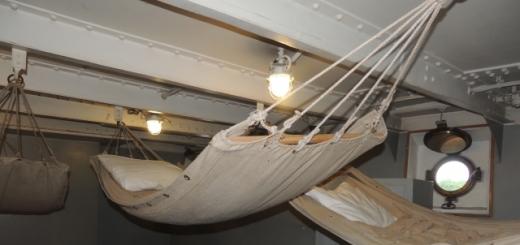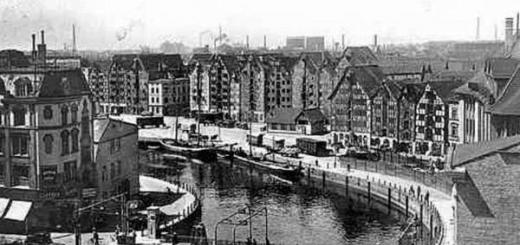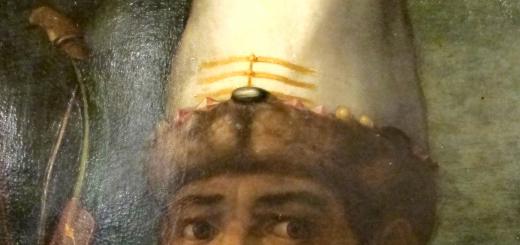It seems that the monument to the Unknown Soldier has always been near the walls of the Kremlin. Who will remember now what was at the site of the memorial, at the place where people silently stop and remember to whom they owe their lives. Who now remembers how the eternal flame ended up in the Alexander Garden? On the Day of the Unknown Soldier, we publish facts from the history of the creation of the memorial.
It was decided to create a memorial of national importance - a monument to the Unknown Soldier - on the occasion of the 25th anniversary of the defeat German troops under Moscow.
At one time, Brezhnev did not approve of the installation of a memorial in the Alexander Garden. After all, at this place there was already a monument with long history- a monument to revolutionary thinkers and leaders of the struggle for the liberation of the working people. In 1918, at the initiative of Lenin, the obelisk was converted into it in honor of the 300th anniversary of the Romanov dynasty.

It was difficult to decide who exactly to bury near the walls of the Kremlin. The choice fell on the remains of a warrior from a mass grave, just discovered in those days near Moscow. A uniform without insignia and with a belt confirmed that the soldier was not a deserter. The soldier also could not be a prisoner, since the Germans did not reach this place. No documents were found with the soldier, which means that his ashes were really “unknown”.
Memorial complex "Bayonets" near Zelenograd - a mass grave from which the ashes of an unknown soldier were transferred for burial in Moscow
On December 2, 1966, the soldier's remains were placed in a coffin wrapped in an orange and black ribbon. And the next day at 11:45 a.m., the coffin was placed on an open car, which moved along the Leningrad highway to the Alexander Garden.

That morning, the entire Gorky Street (now Tverskaya), along which the cortege was moving towards Manezhnaya Square, was filled with people. On December 3, 1966, under an artillery salvo, the ashes of the Unknown Soldier were solemnly buried.

The Tomb of the Unknown Soldier memorial was opened a year later, on May 8, 1967. The monument is a tombstone covered with a bronze battle banner. On the banner are a soldier's helmet and a laurel branch, also made of bronze. The Eternal Flame of Glory burns in the center of the memorial.

Tomb of the Unknown Soldier, 1976. Photo: my_journal_omsk
The eternal flame was delivered on an armored personnel carrier from the military memorial on the Field of Mars in Leningrad. Leonid Brezhnev lit it on the Tomb of the Unknown Soldier, taking the torch from the hands of the Hero Soviet Union Alexey Maresyev.

Eternal flame on the Champ de Mars. Photo: Dean Jackson
Next to the fire is the inscription: Your name it is not known, your feat is immortal.
For centuries, wars have been going on in the world, soldiers are dying, giving their lives for their homeland, whose names very often remain unknown.
Out of respect for their feat, almost every country has Cenotaph, where those whose descendants do not know where their graves come to bow, who simply honor the memory of the soldiers who gave their lives for our peaceful life.
There are many such monuments in Russia, and the most famous one is Tomb of the Unknown Soldier is a memorial in Moscow near the Kremlin.
Important words are written there. Your name is unknown, your feat is immortal. There is an eternal flame burning.
They say that the first monument to the unknown soldier was erected in London, back in 1920, where the remains of those soldiers whose names could not be established were buried.

There are similar monuments in Bulgaria,

in Australia, in Argentina, in Italy, in the Crimea, in Lithuania. and other countries.
One of the famous monuments to the unknown Russian soldier who saved the German girl is this monument in Berlin in Treptow Park.

The first monument to the Unknown Soldier appeared in the middle of the 19th century. There may have been earlier, but no information has been preserved. This monument was erected in the Danish city of Fredericia in 1858 in memory of those killed during the Danish-Prussian war that took place nine years earlier. The monument bears the name of the Unknown Infantryman.
A little later in the USA a similar monument was opened in Biloxi. But a fairly large establishment of monuments of this direction took place in the 20s of the last century after the end of the First World War. In 1920, the Tomb of the Unknown Soldiers appeared in France and Great Britain when the bodies of unknown soldiers were buried. This ritual of memory was then adopted by many countries (Belgium, Italy, Portugal, etc.) and similar memorials were also opened at home.

In Russia a similar tradition began in 1919, when a memorial was opened on the Field of Mars to the victims of both revolutions and civil war(1917-1922). The use of the Eternal Flame on such memorials originated in 1965 in Veliky Novgorod, when the reburial of unknown soldiers who fell in the battles of World War II was held there.
Most our famous monument-memorial to the Unknown Soldier, this is, of course, near Red Square. Opened on the 25th anniversary of the Victory, it became a symbol of heroism and exploits of soldiers who gave their lives in the name of Victory. For reference: Under this memorial, an unknown soldier from the Panfilov Rifle Division, who defended the approaches to Moscow at the station. Kryukovo.
My opinion that any monument dedicated to wars, and fighting, whether it be a tank, a stele, a memorial plaque or a memorial sign, these are all monuments for the Unknown Soldier.
Practically in every locality(and we are no exception) there are monuments with engraved names dead fellow villagers, but these are only surnames, because most of these people are Unknown Soldiers ... they still rest there - on the battlefields.

Yes, after the Great Patriotic War, there are such monuments in almost all cities where there is a memorial of glory, since the victims on eastern front There were so many that it was impossible to identify them all. Therefore, in order to give memory of the wars of that war, on a comprehensive scale, such monuments were created.
This is how it looks in the city of Tiraspol, where I live, where it is located at the very end of the memorial, near the wall.

Historically, during wars, many soldiers died and their remains were not or could not be identified.
In the 20th century, after the end of the bloody World War I, a tradition began to form, according to which nations and states erect monuments to the Unknown Soldier, symbolizing memory, gratitude and respect for all the dead soldiers whose remains were never identified.
The first monument to the unknown soldier appeared in London in 1920. Typically, such monuments are placed on the grave, which contains the remains of a deceased soldier, whose identity is unknown and it is considered impossible to establish it.
And it is these monuments that are the most revered.
Turkey.
Erected in memory of the unknown martyrs of the Canakkale front, who died during the Dardanelles operation of the First World War. Opened August 20, 1960.
Bulgaria, Haskovo.
Monument to Dunno warrior.

Spain Madrid.
Built in 1840, it houses the remains of unknown fighters who died in the May 2 Uprising.

Greece. Constitution Square, Athens.

Finland. Hietaniemi Military Cemetery, Helsinki.

Peace Tower. Built in 1970 in the city of Tondabayashi (Japan) by followers of the Ideal Free Church. It is a symbol of peace throughout the world; inside, unidentified remains of people are buried, and the list of those who died from hostilities is constantly updated, regardless of nationality, religion and race.

Stele of the Unknown Soldier in Mogadishu, Somalia.

Romania. Tomb of the Unknown Soldier, Karol Park, Bucharest.

Egypt. Cairo: Includes the tomb of President Anwar Sadat.

Russia. Tomb of the Unknown Soldier, Alexander Garden, Moscow.

Serbia. Monument to the Unknown Hero (since 1938), Mount Avala, Belgrade.

Estonia. "Bronze Soldier", Military Cemetery, Tallinn.

Tomb of the Unknown Soldier. Carabobo, Venezuela.

Canada. Tomb of the Unknown Soldier, Confederate Square, Ottawa.

Indonesia. "Field of Honor", Bandung
Memorial to the Unknown Soldier, next to the Tomb of the Unknown Sailor at the Kembang Kuning Military Cemetery in Surabaya.

Belgium. Congress Column, Brussels: The Tomb of the Unknown Soldier is at the base of the column.

Syria. Tomb of the Unknown Soldier, Damascus.

Hungary. Heroes Square, Budapest.

Ukraine. A park Eternal Glory, Kyiv
The Monument of Eternal Glory, opened on November 6, 1957, is an obelisk 27 meters high. At the foot of the obelisk, on the tomb of the Unknown Soldier, the Eternal Flame burns. The alley of Fallen Heroes leads to the obelisk. On both sides of it there are tombstones over the graves of 34 hero warriors.

Czech. National Memorial on Zizkov (Vitkov) Hill, Prague.

Argentina. Cathedral, Buenos Aires: Tomb of the Unknown Soldier of Independence.

Israel. "Garden of the Missing", Mount Herzl, Jerusalem.

Memorial of Heroes. Zimbabwe, Harare.

Germany. Unter den Linden, Berlin
Inside the 19th century guardhouse (Neue Wache).

Brazil. National Monument to those killed in World War II, Rio de Janeiro.

Lithuania. Kaunas, Vienybes Square
The grave of Nezinomas kareivis, with the remains of a soldier who died during the Lithuanian Wars of Independence in 1919.

Poland. Tomb of the Unknown Soldier, Marshal Piłsudski Square, Warsaw
It was built as an arcade of the Saxon Palace, destroyed in 1944. There are the remains of soldiers who died between 1918 and 1920.

Portugal. Tomb of the Unknown Soldier, Monastery of Batalha.

Italy. Grave of Milite Ignoto as part of the Vittoriano complex. Rome, Piazza Venezia.

"Tomb of the Unknowns", Arlington National Cemetery, Virginia, United States of America.

France. Under the Arc de Triomphe, Paris.

Great Britain. "Unknown Warrior", Westminster Abbey, London.

India. "Amar Jawan Jyoti (Flame of the Immortal Warrior)", India Gate, New Delhi.

Australia. Australian War Memorial, Canberra.

Monument to fallen soldiers fighting for freedom. Kuala Lumpur, Malaysia.

Austria. Heldenplatz (Heroes' Square), Vienna.

Peru. Plaza Bolivar (Bolivar Square), Lima: contains the remains of a soldier who died in 1881 during the Second Pacific War.

Wars have occurred throughout human history. And even if we take the last two centuries, the death toll during hostilities is in the millions, but not all the remains were identified at the time, and therefore not buried properly. That is why, after the First World War, monuments began to be erected, which they called the Tomb of the Unknown Soldier, which became symbols of all those loss of human lives during the wars. The way these monuments look in different countries world - in our review.

The first such memorial appeared in Britain. The idea was born by the British military chaplain David Railton, who in 1916 saw an ordinary wooden cross on the battlefield and the text "Unknown British Soldier" written in pencil on it. David proposed to the British Parliament and the rector of Westminster Cathedral that all such "unknown soldiers" be commemorated with a single monument, burying one ordinary soldier not just in the cemetery, but as a hero - next to the kings. The idea was supported, and almost simultaneously with England, a similar initiative was proposed in France.
The first such memorial was unveiled on November 11, 1920 at Westminster Abbey. In France, a memorial was created at the foot of the Arc de Triomphe. Soon, similar memorial ensembles were created in other countries around the world.
Great Britain

The very first such memorial to the unknown soldier is located in London at the church, better known as Westminster Abbey. An unidentified soldier who was killed during the First World War was buried here. The remains were loaded into a container, which was carefully secured by placing on top a medieval crusader sword, personally selected by the king from the royal collection. On top of the sword was placed an iron shield with the inscription "British warrior who fell in the Great War 1914-1918 for king and country".

A slab of Belgian marble was placed over the grave, on which an inscription composed by the abbot of the church was cast in brass. This brass is a meltdown of ammunition used during the First World War.
France


Two months after the solemn burial of the Unknown Soldier in London, a similar event took place in Paris. The memorial is located under the arches of the triumphal arch on Charles de Gaulle Square in Paris, since the public insisted on this place. Two years later, a new tradition of daily symbolic lighting of the memorial fire began here. A small text is written on the plate "Here lies a French soldier who gave his life for the Motherland 1914 1918."
USA


The Tomb of the Unknown Soldier in America is located at Arlington National Cemetery in Virginia. This memorial was opened a year after the London one. The memorial is guarded around the clock, and serving as a guard at this memorial is considered a special honor. Each movement of the employee at the monument is verified to the second and therefore requires special restraint.
Belgium

Brussels joined London two years later - on November 11, 1922, a monument to the memory of the unknown soldier was also erected on the Congress Square in the city center. The memorial is a tall stele with two lions on either side of the grave.
Canada


The Tomb of the Unknown Soldier in Canada is located in the capital Ottawa in front of the National War Memorial in Confederation Square. Here rests a soldier who died in France during the First World War. The remains were brought from the site of the Canadian Army battlefield.
Egypt

In Egypt, there are several Tombs of the Unknown Soldier, in which both Egyptian and Arab soldiers are buried. However, the most famous is the pyramid-shaped memorial located in Nasser City, one of the districts of Cairo. This memorial was created in 1974 and symbolizes the fallen soldiers - both Egyptians and Arabs - who died in October 1973. concrete pyramid rises to 36 meters, and at its foot is a slab of solid basalt, which, in fact, covers the grave.
Iraq


The monument dedicated to the memory of the Unknown Soldier in Baghdad appeared in 1980, when the Iran-Iraq War had just begun. This monument was created in the form of a shield that protects a small cube made from individual metal plates. Under the cube is a hole leading to the underground museum, so that visitors to the museum can see a beam of light breaking through to them from under the shield.
Italy
The Greek memorial to the Unknown Soldier is located in Syntagma Square in Athens. The grave is guarded by the Evzones, an elite infantry unit of the Greek army. The memorial itself is a marble wall depicting ancient warrior who died from wounds during the war.
Russia

The Tomb of the Unknown Soldier in Moscow is located in the Alexander Garden, near the walls of the Kremlin. On top of the slab lies a bronze soldier's helmet, a laurel branch and battle flag, and in the center of the memorial there is a niche with the inscription "Your name is unknown, your feat is immortal." To the right of the grave there is an alley with pedestals, each of which contains capsules with the earth of hero cities. Initially, the ashes of the Unknown Soldier were buried at the entrance to the city of Zelenograd, but in 1966 they were transferred to Moscow.
- a monument-symbol in honor of the soldiers who died in battles. The first Tomb of the Unknown Soldier was built in Paris in memory of the victims of the First World War. The ceremony of its opening and lighting of the Eternal Flame took place on November 11, 1920. AT Soviet Russia the first memorial building in memory of the heroes who fell in armed struggle against enemies during the February and October revolutions and the Civil War was opened in the center of the Field of Mars in Petrograd (now St. Petersburg) on November 7, 1919 (the Eternal Flame has been burning since 1957) .
The memory of the heroism of Soviet soldiers during the Great Patriotic War is immortalized by many memorial structures, including the graves of the Unknown Soldier in a number of cities across the country. In Moscow, the memorial Tomb of the Unknown Soldier was built in the Alexander Garden near the Kremlin wall. The ashes of the Unknown Soldier were brought here on the days of the 25th anniversary of the defeat of the Nazi troops near Moscow in 1966 from a mass grave from the 41st kilometer of the Leningrad Highway - the place of bloody battles.
On May 8, 1967, the memorial architectural ensemble "Tomb of the Unknown Soldier" was opened at this place and the Eternal Flame of Glory was lit, which breaks out from the middle of a bronze star placed in the center of a mirror-polished black square of labrador, framed by a platform of red granite. The torch was delivered from Leningrad, where it was lit from the Eternal Flame on the Field of Mars.
On the granite slab of the tombstone is inscribed: "Your name is unknown, your feat is immortal."
To the left of the tombstone is a wall of crimson quartzite with the inscription: "To those who fell for the Motherland. 1941-1945."
On the right - a granite alley, where blocks of dark red porphyry are located with capsules immured in them with the earth of hero cities: Leningrad (taken from the Piskarevsky cemetery), Kyiv (from the foot of the Obelisk to the participants in the defense of the city), Volgograd (from Mamaev Kurgan), Odessa (from the defense lines), Sevastopol (from the Malakhov Kurgan), Minsk, Kerch, Novorossiysk, Tula (the land was taken from the advanced defense lines of these cities) and the hero-fortress Brest (the land from the foot of the walls).
On each block there is the name of the city and a chased image of the Gold Star medal.
According to the order of Russian President Vladimir Putin, on the stone parapet near the tomb of the Unknown Soldier, the word "Volgograd" was replaced with "Stalingrad".
Further from the alley of hero cities in honor of the cities of military glory, opened in 2010. The monument is a block about 10 meters long, made of red granite. There are inscriptions on it - "Cities of military glory" and a list of names of the cities themselves.
The tombstone of the grave-monument is crowned with a three-dimensional bronze composition - a soldier's helmet and a laurel branch lying on a battle banner (installed in 1975).
By decree of the President of the Russian Federation of December 8, 1997, a permanent guard of honor from the Presidential Regiment was established at the Eternal Flame at the Tomb of the Unknown Soldier in Moscow. According to the document, the changing of the guard at the post takes place daily every hour from 8 am to 8 pm. In exceptional cases, at the discretion of the head Federal Service protection of the Russian Federation guard of honor can be exhibited at another time.
Decree of the President of Russia to preserve the historical cultural heritage Peoples of the Russian Federation, the memorial "Tomb of the Unknown Soldier" was given the status of a National Memorial of Military Glory. It was included in the State code of especially valuable objects of cultural heritage of the peoples of Russia.
In the same year, the reconstruction of the memorial began. In connection with the work, the Eternal Flame was moved to Poklonnaya Gora in Victory Park on December 27, 2009. On February 23, 2010, after the completion of repair work, it was returned to the Kremlin wall.
On May 8, 2010, the National Memorial of Military Glory was solemnly opened after reconstruction.
Wreaths and flowers are laid at the Tomb of the Unknown Soldier in memory of those who died for Russia on the battlefields. Here, heads of delegations of foreign states pay tribute to the heroes during their visits to Russia.
AT last years a tradition was born: early in the morning on Victory Day, veterans of the Patriotic War and young people gather at Post No. 1 for a memorial watch with lighted candles in their hands.
The material was prepared on the basis of information from RIA Novosti and open sources











